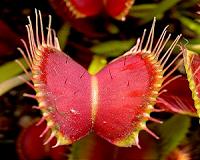| . |  |
. |
St. Louis MO (SPX) Aug 06, 2010 Pass the chips and hand over the remote. In a study involving the first-ever daily energy expenditure measurements in apes, a researcher from Washington University in St. Louis and his team have determined that orangutans living in a large indoor/outdoor habitat used less energy, relative to body mass, than nearly any eutherian mammal ever measured, including sedentary humans. All this despite activity levels similar to orangutans in the wild. "It's like finding a sloth in your family tree," says Herman Pontzer, PhD, assistant professor of anthropology in Arts and Sciences and lead author of the study. "It's remarkably low energy use." The research will be published online the week of Aug. 2 in the early edition of the Proceedings of the National Academy of Sciences. Pontzer and his team spent two weeks studying daily energy expenditure of orangutans in the Great Ape Trust, a 230-acre campus in Des Moines, Iowa. The study revealed an extremely low rate of energy use not previously observed in primates, but consistent with slow growth and low rate of reproduction in orangutans. Pontzer suggests this may be an evolutionary response to severe food shortages in the orangutan's native Southeast Asian rainforests. The rainforests of Borneo and Sumatra are highly random environments that often experience crashes in the availability of ripe fruit, the food on which orangutans depend. The study suggests that orangutans have adapted over time by becoming consummate low-energy specialists, decreasing their daily energy needs to avoid starvation in food-poor times. Pontzer thinks this research also may shed light on the evolved energy use of other primates, as well as human foragers. He plans to expand the study.
Share This Article With Planet Earth
Related Links Washington University in St. Louis Darwin Today At TerraDaily.com
 No Such Thing As A Free Lunch For Venus Flytraps
No Such Thing As A Free Lunch For Venus FlytrapsVictoria, Australia (SPX) Aug 06, 2010 Charles Darwin described the Venus Flytrap as 'one of the most wonderful plants in the world.' It's also one of the fastest as many an unfortunate insect taking a stroll across a leaf has discovered. But what powers this speed? Dr Andrej Pavlovic of Comenius University, Slovakia, has been studying the plants with the help of some specialised equipment and a few unlucky insects. In th ... read more |
|
| The content herein, unless otherwise known to be public domain, are Copyright 1995-2010 - SpaceDaily. AFP and UPI Wire Stories are copyright Agence France-Presse and United Press International. ESA Portal Reports are copyright European Space Agency. All NASA sourced material is public domain. Additional copyrights may apply in whole or part to other bona fide parties. Advertising does not imply endorsement,agreement or approval of any opinions, statements or information provided by SpaceDaily on any Web page published or hosted by SpaceDaily. Privacy Statement |